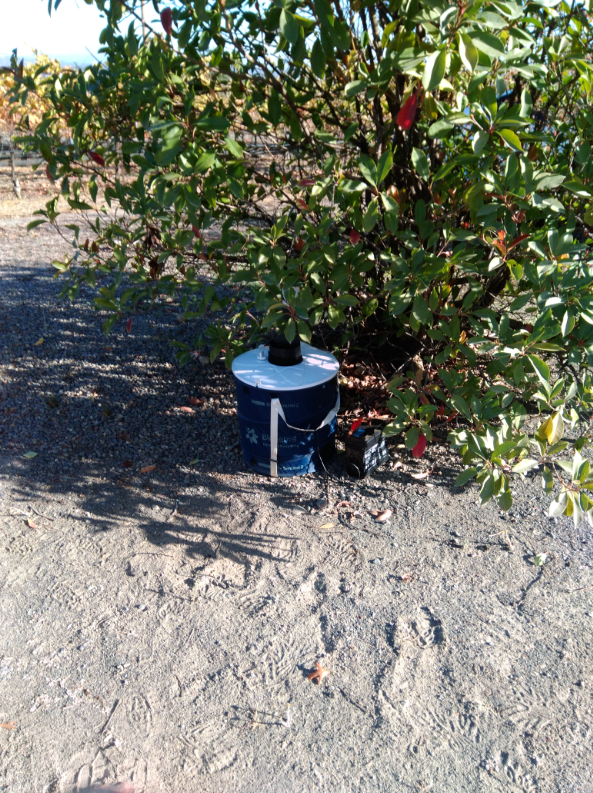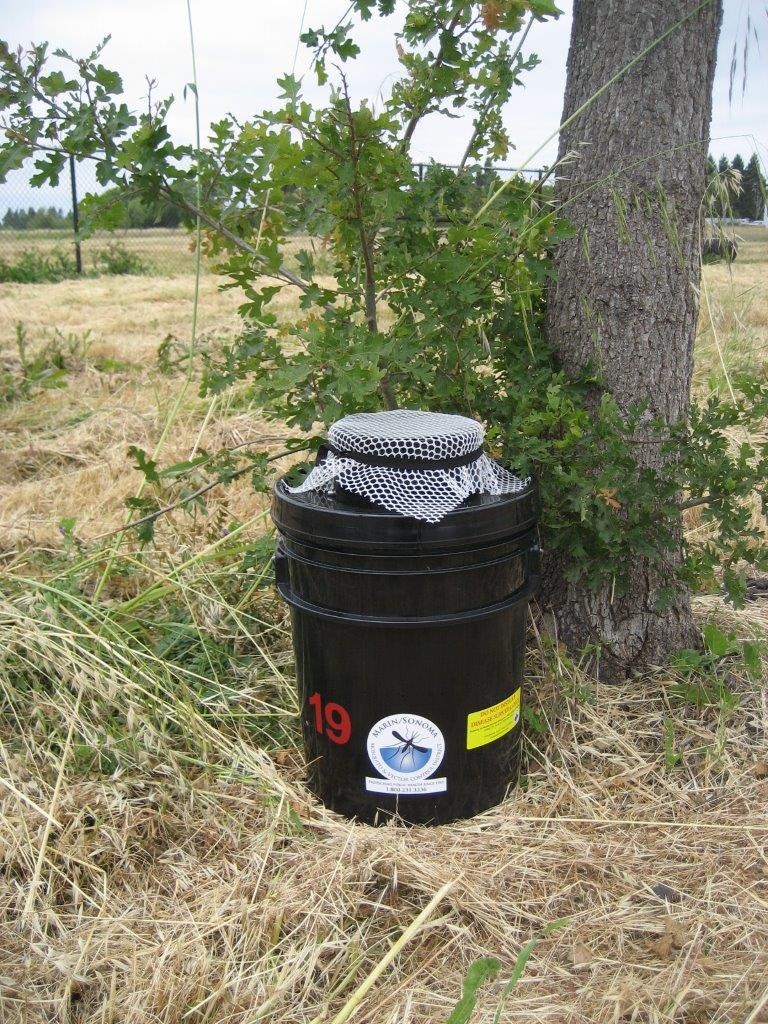Mosquito Surveillance 101: The Tools We Use to Track and Trap
The Marin/Sonoma Mosquito and Vector Control District (District) maintains a comprehensive surveillance program to monitor the abundance of mosquitoes and to detect the pathogens spread by them, such as West Nile virus (WNV), St. Louis encephalitis (SLEV), and western equine encephalitis (WEE). One way this is achieved is through the use of adult mosquito traps set in both Marin and Sonoma counties. Let’s take a closer look at the traps the District uses to track adult mosquitoes.
EVS (Encephalitis Vector Survey)
EVS traps, also known as carbon dioxide (CO2) traps, use dry ice to attract mosquitoes. The dry ice gives off carbon dioxide as it changes back into a gas, which mimics human breathing. A fan powered by batteries pulls the mosquitoes into a net bag when they fly close to the trap.
BG Sentinel
Another trap the District uses is the BG Sentinel trap. Like the EVS traps, these use dry ice to create carbon dioxide. However, the BG Sentinel trap goes a step further with an added chemical that mimics human scent. When mosquitoes fly over the trap, a small fan pulls them into a collection bag.
Gravid
Gravid traps work differently by using nutrient-rich water to attract female mosquitoes looking for a place to lay their eggs. When the mosquitoes enter the trap, they are sucked up by the fan and become trapped in the container.
AGO (Autocidal Gravid Ovitrap)
AGOs are another type of gravid trap used to attract female mosquitoes looking for a place to lay their eggs. These traps use water infused with decaying hay as an attractant. The inner surface of the trap is lined with sticky paper, which captures mosquitoes trying to reach the water.








The District sets these traps weekly from April through October. Once the traps are brought back to the lab, District biologists count, identify, sort, and test the mosquitoes for viruses. This information helps predict where the risk of disease is higher and guides important mosquito control efforts to protect public health.
The Marin/Sonoma Mosquito and Vector Control District's programs and services are funded through property taxes and benefit assessments, and are provided to all residents in Marin and Sonoma counties at no additional cost.
